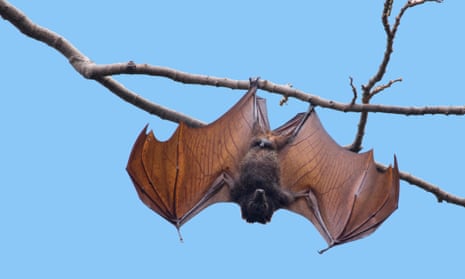For several months, health workers have been battling to contain an Ebola outbreak in the Democratic Republic of the Congo. A total of 60 cases, 28 of them fatal, have been reported around the town of Mbandaka, though authorities say the outbreak is now under control.
Politicians, nevertheless, remain nervous. Thousands died in the West African Ebola outbreak of 2014 after the virus – which probably spread from infected animals, such as fruit bats – triggered widespread cases of severe, sometimes fatal, internal bleeding.
Ebola is one of a series of previously unknown diseases – others include Sars and Zika – that have recently appeared without warning and devastated communities, having jumped from animal populations to humans. HIV spread to humans from chimpanzees, for example.
And in future new killers will emerge as humans spread into previously inaccessible areas and come into contact with infected creatures, causing deadly new pandemics.

Now a group of scientists believe they have solution. They have launched a remarkable new project which aims to spot the next pandemic virus. The international initiative is known as the Global Virome Project (GVP) and it aims to pinpoint the causes of fatal new diseases before they start to make people ill.
Advocates of the project say they will achieve this remarkable task by genetically characterising viruses found in wild animals – particularly those that have been major sources of viruses deadly to humans. By pinpointing viruses at greatest risk of infecting humans,, counter-measures, such as vaccines can be prepared.
“We are about to start initial work in China and Thailand by studying bats, rodents, primates and water birds there,” said Peter Daszak, of the EcoHealth Alliance, one of the main supporters of the project. “We aim to find out as yet unknown viruses that could infect men and women and so pinpoint ways to protect them.”
A pilot study, known as Predict and backed by the US Agency for International Development (USAID), has already pinpointed more than a thousand viruses in animals that have the potential to infect humans. The GVP will aim to boost that number significantly. Indeed, if it is to succeed fully in its task it will have improved on these figures by several orders of magnitude for it is thought there are around 1.6 million yet-to-be-discovered viral species living in animals. Finding out which could infect humans is a tremendous challenge that could take decades, though in the short term GVP scientists believe they could at least be able to identify them.
Much of that work will have to be done in the field. Sending samples back and forth from central facilities will not work on this scale. The GVP will therefore requirerequire extraordinary organisation - and a fair amount of funding – about $1.2bn. However, this represents value for money, Daszak insisted. Three out of four new or emerging infectious diseases are now spread to humans from other animals. Action to block these transmissions is urgently needed.
“The project is currently in an incubation phase and while its price may seem high, it is a fraction of the cost of just one major outbreak, like the West African Ebola epidemic,” said Daszak. Governments including those of the US, China and Thailand have given support and the aim is to raise further funds over coming years, he added.
Not every expert agrees with the project’s approach, however. In a paper in Nature this month, one group of researchers, led by Professor Edward Holmes, of Sydney University, claimed its hopes of carrying out meaningful prediction of new pandemics were misguided.
“There aren’t enough data on virus outbreaks for researchers to be able to accurately predict the next outbreak strain. Nor is there good enough understanding of what drives viruses to jump hosts, making it difficult to construct predictive models,” he said.
Holmes and his colleagues argue that even it were possible to identify which viruses are likely to emerge in humans, thousands of candidates could end up being identified, each with a low probability of causing an outbreak. Instead they propose that the screening of people who are already exhibiting symptoms of a disease would make a better avenue of approach to the problem – the best time to tackle an emerging disease.
“Once an emerging outbreak virus has been identified it needs to be analysed quickly to establish what type it is, which molecular mechanisms … enable it to jump between individuals … and how it affects those infected,” they state.
However, Eddy Rubin, chief scientist at the biotechnology company Metabiota, which is supporting the GVP, argued that only responding to a disease after an outbreak was no longer acceptable. “We make preparations against hurricanes and earthquakes. We need to do the same with diseases. We need to start to collect data and make predictions about where new outbreaks might occur,” he told the Observer.
“If we have information about tens of thousands of these viruses then we can use artificial intelligence to look for common features and so could make counter-measures and vaccines against whole categories of viruses. This could transform the way we deal with infectious diseases and viral outbreaks.”
